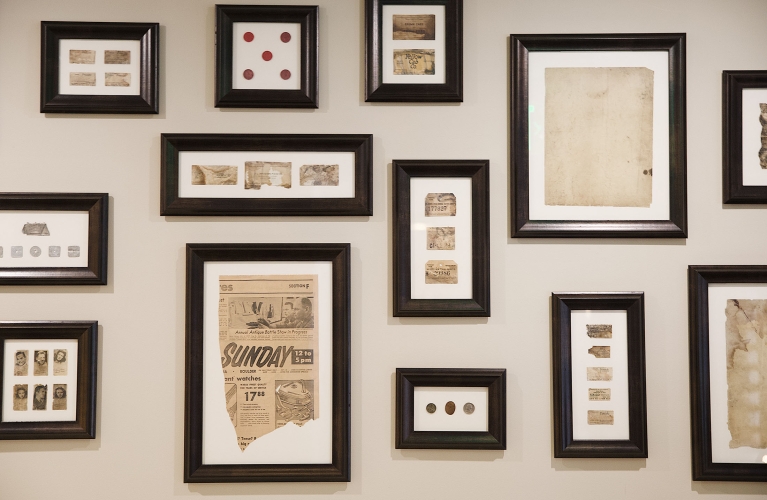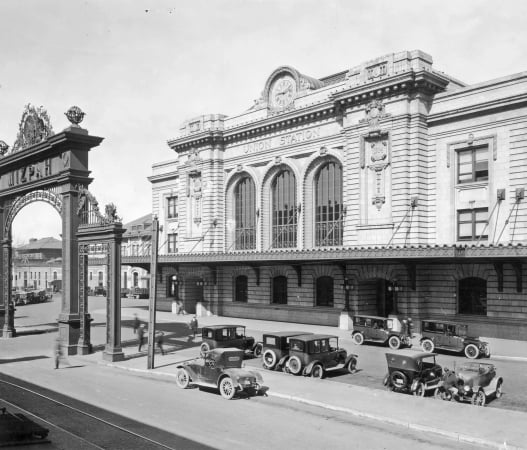
These Lost Treasures Tell the Story of Denver Union Station
- October 6, 2022
- History
These Lost Treasures Tell the Story of Denver Union Station
Since first opening its doors to the public in 1881, Denver Union Station has played host to generations of ordinary people and their extraordinary stories. From newly minted Denverites arriving in the city to begin anew, to military service members bidding farewell to their loved ones before heading off to war, an untold wealth of memories echo within these walls. And while much of these stories have been lost to time, relics of this rich and vibrant history can still be found (if you know where to look), living on through the lost treasures of Denver Union Station.
Read on to immerse yourself in the forgotten stories behind five of the Station’s most compelling artifacts.

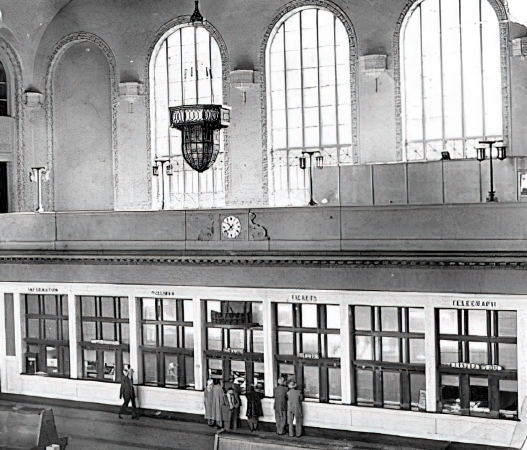
Old Train Markers
The Denver Union Station of today is many things — transit hub, event venue, shopping concourse, public square, dining destination, civic icon, to name just a few. But during the earliest decades of the Station’s life, it was defined more than anything else by the railway it served.
Though it’s easy to forget in today’s era of smartphones and social media, railroads once represented the height of technological innovation. In the late 19th century, rail travel opened up the West to untold numbers seeking a better life on this bold new frontier. What had once been a perilous, months-long journey could now be undertaken in relative comfort, in a mere matter of days.
A striking relic of this “golden age of train travel” can still be found in the south elevator lobby of the Station’s first floor, where carefully preserved scrolls from an old train marker proudly offer a glimpse into our rail-connected past. Made from hand-painted cloth and dating to the early 1900s, these signage scrolls were once located next to the doors leading up to the platforms. They list railroad companies and route destinations, and were used to assist passengers and freight operators in navigating the bustling rail depot.
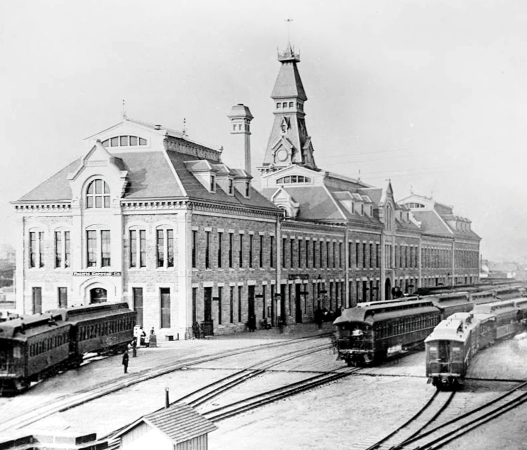
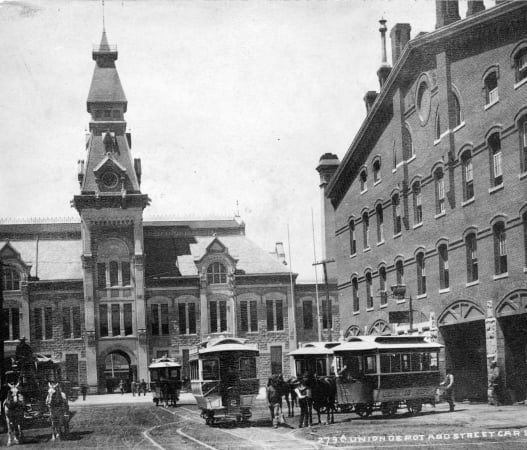
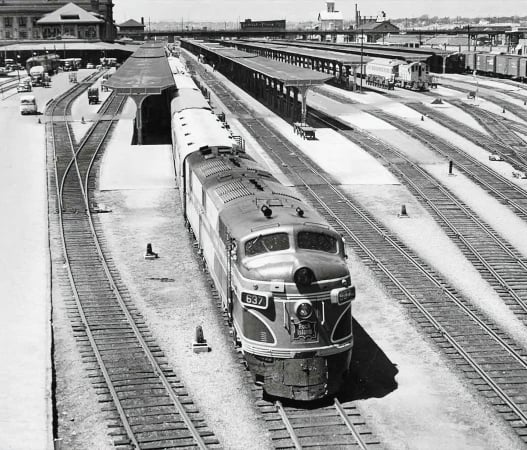
Found Objects
When preservationist Dana Crawford affectionately dubbed Union Station “Denver’s living room”, she likely had little inkling of the trove of treasures that lurked within the historic building’s proverbial sofa cushions. During restoration of the Great Hall, it was determined that the Station’s original waiting benches would have to be disassembled and removed due to hazardous materials within their framework. In the process, workers uncovered a whole host of everyday items that had slipped, unnoticed, through seams and cracks in the benches, where they remained untouched for decades.
These historic items include claim tickets, coins, tokens, newspaper clippings, luggage tags, wallet-sized photographs, and trading cards — small relics of the ordinary people who passed through the hall over decades and generations. Today, an assortment of these “found objects” are displayed in the Station’s south wing guest corridor on the second floor.
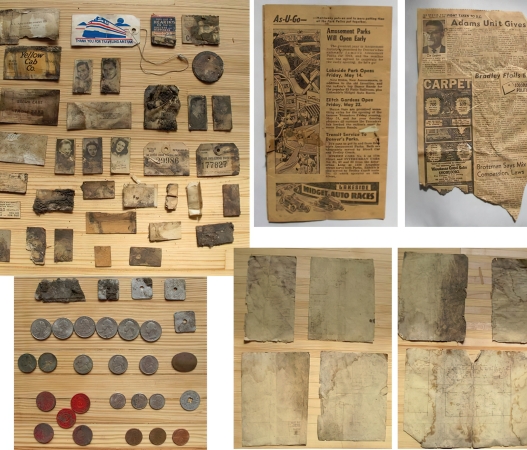
Original Blueprints
From its original 1881 incarnation as the Denver Union Depot to its 2014 rebirth as the cultural heart of the Mile High City, Union Station has taken many different forms over the years. A snapshot of one such form can be still found today in the staircase connecting the third and fourth floors.
Here, observant visitors can peruse the original 1914 Station blueprints. Recovered from an office in the Lower Downtown neighborhood, these “linens” (as they were once called) depict the Station expansion that was undertaken in the early 20th century, when high demand for train travel led to Denver quickly outgrowing its original, more modestly sized rail depot.
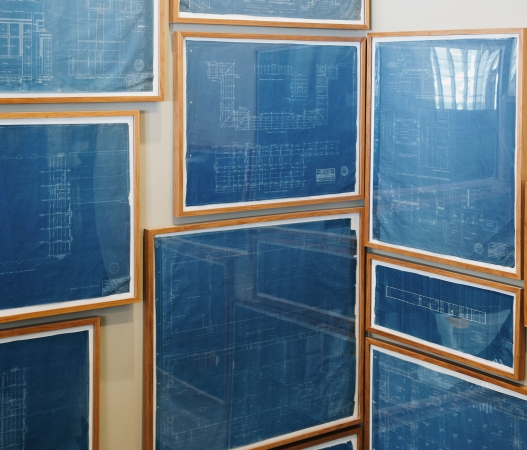
Antique Luggage
Yet another homage to the Station’s past as a bustling center for train travel can be found on the third-floor south wing gallery corridor. In a striking installation that blends the medium of contemporary sculpture with the emotional resonance of cultural memory, artist Phil Bender’s “Suitcases” is just that — a neatly stacked assortment of antique hand luggage, evocative of Union Station’s rich history. Bender’s sculptural works employ everyday human artifacts like these, arranged into simple, repeating patterns which prompt the viewer to reexamine such common items in a new and uncommon light.

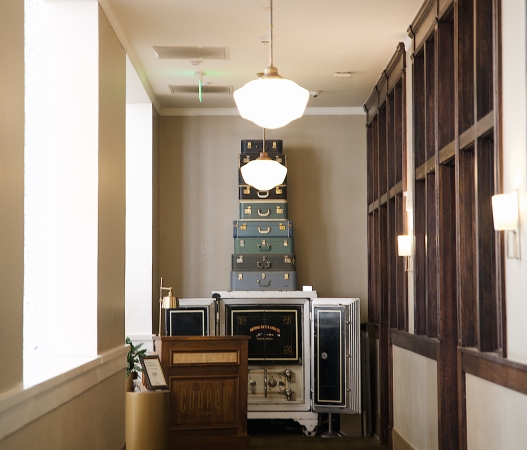
The Mizpah Arch
The grandest and most breathtaking of the Station’s lost treasures, the Mizpah Arch can be glimpsed now only in early-20th century archival snapshots. Dedicated on Independence Day — July 4th, 1906 — the arch once stood in front of Denver Union Station at the foot of 17th Street: a stunning architectural marvel framed by two square columns and topped with a metal filigree clock. Then-mayor Mayor Robert Speer called it “an expression of love, good wishes, and kind feelings of our citizens to the stranger who enters our gates.”
Crafted from 70 tons of steel, the 60-foot arch was illuminated by 2,194 light bulbs, and initially emblazoned on both sides with the word “Welcome”. In time, the side facing away from the Station was amended to read “Mizpah” instead — a Hebrew parting salutation from Genesis 31:49, which was thought to be a more fitting message to those departing the city.
For nearly three decades, the Mizpah Arch stood as an emblem of the Mile High City, with a cultural status not unlike New York’s Statue of Liberty. In time, however, the arch fell into disrepair. Feeling the pinch of the Great Depression and unable to finance a proper restoration, the city deemed the arch a public safety hazard, and in 1931 it was demolished.
Nearly a century later, however, the Mizpah Arch continues to cast a long cultural shadow. The city has seen periodic campaigns to rebuild the lost arch, with support from prominent Denverites including Dana Crawford, architect Jim Johnson, and historian Tom Noel. And smaller homages to it can still be found on the streets of downtown Denver, where certain street lamps are marked with “Welcome” on one side and “Mizpah” on the other — an old to the byone age of the railroad.
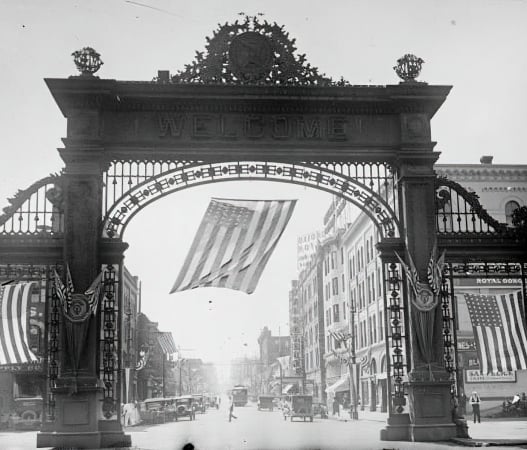
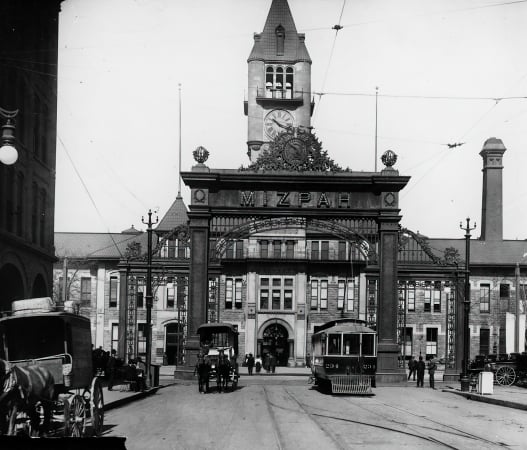
Additional Blogs to Check Out
Here are some blogs we think you’ll love, give them a read.
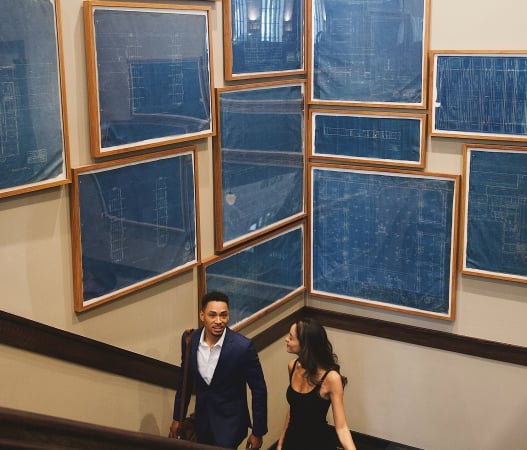
Plan the Perfect Date Night in Denver Union Station
Whether meeting an exciting new match for the very first time or celebrating a milestone anniversary in style, plan the perfect date night at Union Station.
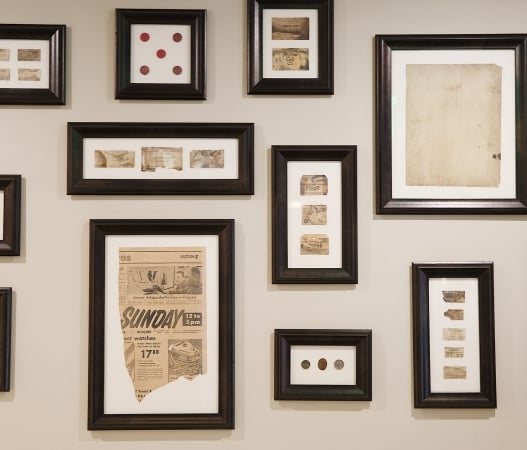
These Lost Treasures Tell the Story of Denver Union Station
Relics of Denver's rich and vibrant history abound in Union Station — if you know where to look. Join us as we explore five of the Station's lost treasures.
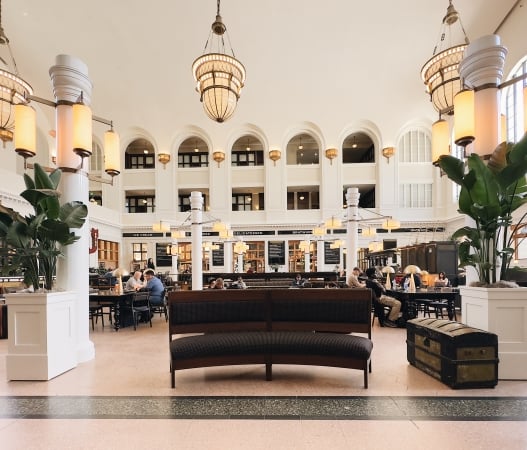
Our Ode to an Original Bench returned to Denver Union Station
Welcome Home Birge & Shoemaker Family Bench! Our Ode to an Original Bench returned to Denver Union Station
